MENU
(Feb. 10, 2017 - stories by Ralph Kurtenbach) Let’s face it, compressing 85 years of history into a single evening event is a tough assignment.
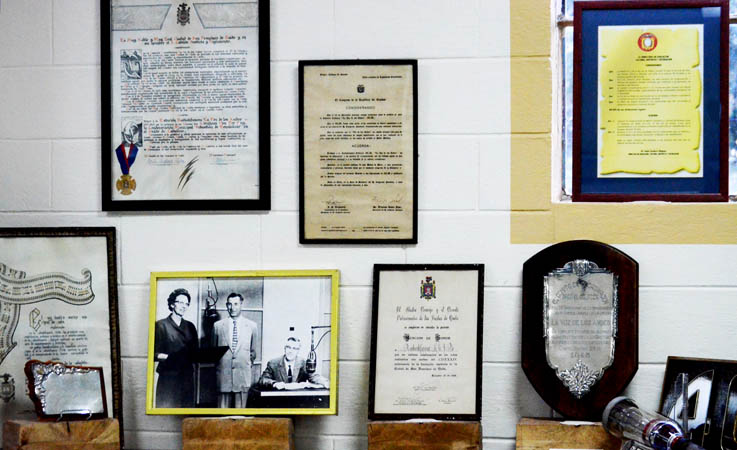 If an anniversary ceremony for Radio Station HCJB in Ecuador failed to squeeze the story into a capsule, it wasn’t for lack of trying. The Ecuador radio station’s rich history was told on Dec. 1 in Quito with the event’s emcees recounting the background of the media outlet, telling about its dedicated staff and explaining the influence of the station’s impact on society.
If an anniversary ceremony for Radio Station HCJB in Ecuador failed to squeeze the story into a capsule, it wasn’t for lack of trying. The Ecuador radio station’s rich history was told on Dec. 1 in Quito with the event’s emcees recounting the background of the media outlet, telling about its dedicated staff and explaining the influence of the station’s impact on society.
The special program components blended to relate how simple beginnings—a 200-watt transmitter in a sheepshed—led to HCJB’s growth in geographic reach accompanied by broadcast technology innovations still talked of in engineering circles.
But alas, stories rife with luscious detail needed to be condensed. And why? Because—as with radio broadcasting itself—the clock is running. Ever running.
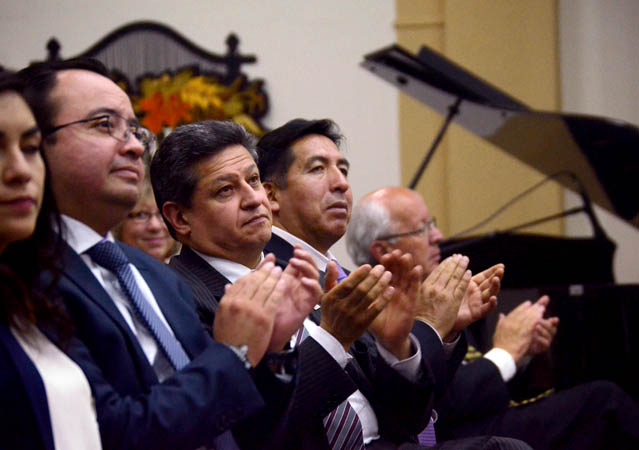 Anabella Cabezas, director of HCJB Ecuador and a Reach Beyond board member, together with her staff, put together a program that included videos featuring historic photos, speeches that extolled achievements, and narratives about the focused vision decades ago of HCJB’s founders’ intent on Christian broadcasting. In a 2½-hour marathon that also featured recognitions of key people, the segments were interspersed with lively musical interludes that drew rousing audience participation.
Anabella Cabezas, director of HCJB Ecuador and a Reach Beyond board member, together with her staff, put together a program that included videos featuring historic photos, speeches that extolled achievements, and narratives about the focused vision decades ago of HCJB’s founders’ intent on Christian broadcasting. In a 2½-hour marathon that also featured recognitions of key people, the segments were interspersed with lively musical interludes that drew rousing audience participation.
The station’s first broadcast emanated from the living room of the home of the ministry’s co-founder, Clarence Jones, in Quito, the Ecuadorian capital, on Dec. 25, 1931.
At the anniversary celebration decades later on Thursday, Dec. 1, hundreds of invitees joined in celebrating the media outlet’s anniversary.
The crowd—including such dignitaries as Israel’s ambassador to Ecuador, Edwin Yabo—listened as journalist Gonzalo Ortiz placed the station’s start in a setting of economic uncertainty. Jones and fellow missionaries began the ministry as the world was in the throes of the Great Depression.
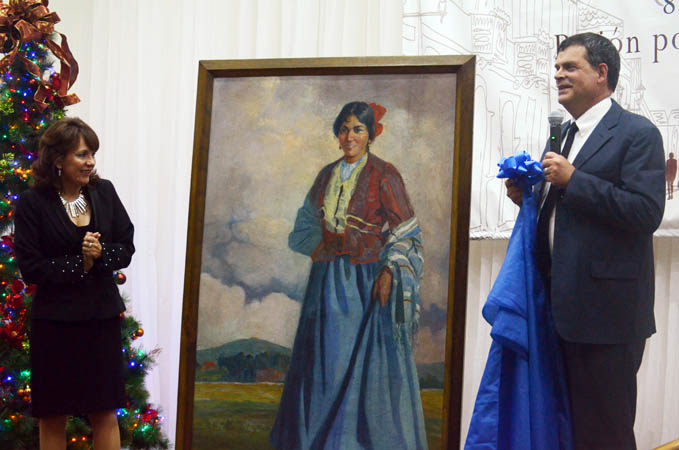 Ortiz also lauded contributions to journalism as the station’s staff tutored younger broadcasters. They emphasized factual reporting and objectivity, he said. People smiled as Ortiz carefully and slowly enunciated that good announcing comes “by opening the mouth.” He continued that “it was a school” in the principles of announcing and news coverage.
Ortiz also lauded contributions to journalism as the station’s staff tutored younger broadcasters. They emphasized factual reporting and objectivity, he said. People smiled as Ortiz carefully and slowly enunciated that good announcing comes “by opening the mouth.” He continued that “it was a school” in the principles of announcing and news coverage.
“Unless the Lord builds the house, the builders labor in vain,” offered Dan Shedd, executive director of Reach Beyond’s Latin America Region, adding that even as media have changed during the station’s long history, “the legacy of HCJB is that He has built the ministry and the labor has not been in vain.”
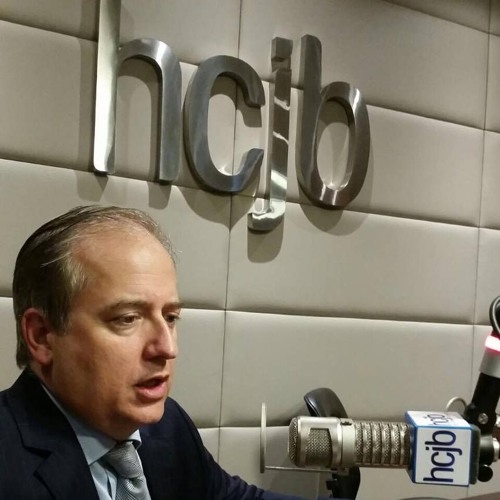 Then in a gesture of appreciation, Shedd talked of a large painting of a woman—art that had been donated to the station decades ago by one of its Nordic broadcasters, Ellen Campaña. A classic by the late Ecuadorian artist, Victor Mideros, the painting had been water damaged two years ago. But after having it repaired, Shedd publicly presented it to Cabezas.
Then in a gesture of appreciation, Shedd talked of a large painting of a woman—art that had been donated to the station decades ago by one of its Nordic broadcasters, Ellen Campaña. A classic by the late Ecuadorian artist, Victor Mideros, the painting had been water damaged two years ago. But after having it repaired, Shedd publicly presented it to Cabezas.
The present day finds HCJB amid frequent adaptations to the digital realm. Striving for new audiences on the internet, staff members continue to carry out in a new communications landscape the very same mission statement set forth by the original founders who determined that a call sign of “HC” should be followed by “JB” as signposts to guide them in a mission of Heralding Christ Jesus’ Blessings. In Spanish, the call letters signify Hoy Cristo Jesús Bendice (Today Christ Jesus Blesses).
With many HCJB stories still left untold as well-wishers mingled over snacks later in the evening, Cabezas was able to send home with them a gift from the station, a book titled HCJB 85 Años Pasión por el Servicio (HCJB 85 Years Passion for Service) (see related story below).
Stories of Radio Station’s Service to Listeners Revealed in Anniversary Book
War, peace, looming disaster, personal trauma—these themes all appear in the pages of a recent commemorative book about the pioneer missionary broadcaster, HCJB La Voz de los Andes (HCJB The Voice of the Andes).
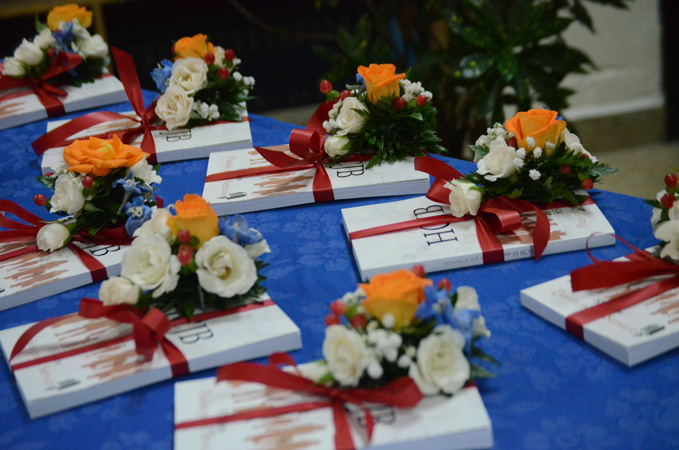 On the pages of a Spanish-language book, HCJB 85 Años Pasión por el Servicio (HCJB 85 Years of Passion for Service) anecdotes reveal how Christian media in Ecuador has touched the lives of its listeners.
On the pages of a Spanish-language book, HCJB 85 Años Pasión por el Servicio (HCJB 85 Years of Passion for Service) anecdotes reveal how Christian media in Ecuador has touched the lives of its listeners.
The broadcasts began in 1931 on a 200-watt transmitter when radio was in its infancy around the world. The founding families were in the vanguard of broadcasting, and down through the years, innovation has marked the station’s progress.
“I remember as a young lieutenant on the beautiful Curaray River at the Pavacachi and Lolocachi posts [in Ecuador´s rain forest],” recalled former Ecuadorian Army General Paco Moncayo, who is a candidate for president in upcoming Ecuadorian elections. He said that “we had no way of communicating with the rest of the country, so with another lieutenant and some 20 soldiers, we listened to HCJB on the battery-operated radios.”
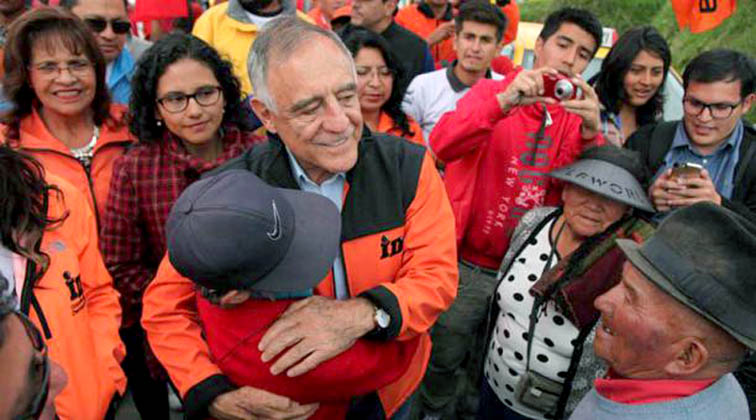 Decades later during a 1995 border war with Peru (Ecuador’s southern neighbor), Moncayo and his jungle-based troops appreciated hearing news on the solar-powered radios issued to them by the Christian media outlet. News from the outside was revered, especially when Ecuador and Peru signed a peace accord. “For soldiers who are gambling their lives every day, knowing that peace had come was really huge news,” Moncayo said.
Decades later during a 1995 border war with Peru (Ecuador’s southern neighbor), Moncayo and his jungle-based troops appreciated hearing news on the solar-powered radios issued to them by the Christian media outlet. News from the outside was revered, especially when Ecuador and Peru signed a peace accord. “For soldiers who are gambling their lives every day, knowing that peace had come was really huge news,” Moncayo said.
Former missionary Horace Easterling recounted how a pastor answering the listener helpline at a Bolivian affiliate station of the Spanish-language satellite radio network, ALAS (América Latina vía Satélite), received a call from a teenager in distress. “It took several minutes for her crying to become a mournful sob, as he gently spoke words of encouragement and reaffirmed that he would help her in any problem she was experiencing,” wrote Easterling.
The caller feared she might bleed to death. When asked about its cause, she confided that she’d had an abortion hours earlier. Her parents knew nothing of the abortion or the pregnancy. When the caller finally conceded to give her address, help was sent immediately.
Earlier in the 1990s, program producer Mauricio Carpio and others visited the site of a landslide that had formed a dam consisting of some 20 million cubic meters (26 million cubic yards) of earth. Disaster loomed as Ecuador’s army dispatched demolition experts to plan and execute a strategic release, even as flood waters rose behind the dam. The threatened area, known as La Josefina, was near a major hydroelectric installation critical to Ecuador’s power needs.
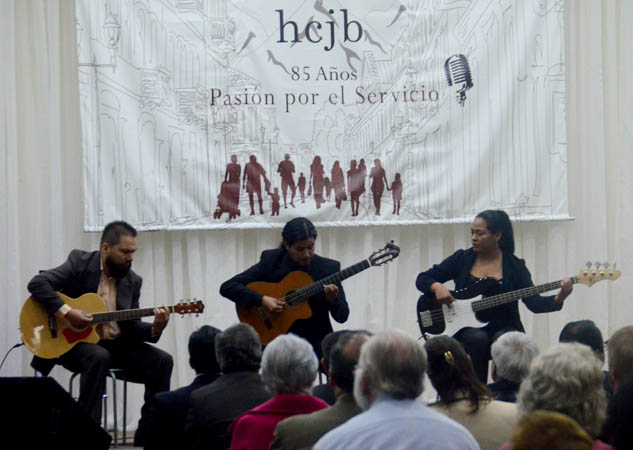 Carpio went as a reporter, but also as a representative of Jesus Christ. Among villagers desperate in the face of potential ruin, he and his companions began sharing words of encouragement. At the same time, “the radio signal became a mediator of messages of tranquility or help for relatives and friends who lived in distant countries or provinces, and demanded to know the situation of their relatives or acquaintances.”
Carpio went as a reporter, but also as a representative of Jesus Christ. Among villagers desperate in the face of potential ruin, he and his companions began sharing words of encouragement. At the same time, “the radio signal became a mediator of messages of tranquility or help for relatives and friends who lived in distant countries or provinces, and demanded to know the situation of their relatives or acquaintances.”
Even with a controlled release of the waters, parts of three highland provinces were affected and “the losses reached a total of $147.6 million, the equivalent to 1 percent of Ecuador’s gross domestic product that year,” wrote Carpio. He said that thinking back upon the time of giving both information and encouragement, “I am inclined to think that the informal talks on those cold nights were our best contribution to the settlers of La Josefina.”
HCJB was just the start, with other Reach Beyond mission work to follow, including establishment of a medical clinic in 1949, two hospitals in the 1950s and medical caravan work reaching some of the remotest parts of Ecuador. The chapter, “HCJB: More Than Radio,” chronicles such bold Christian endeavors as initiating an accredited communications school, a radio Bible institute, family practice clinics and a television station that operated for more than a decade.
A section of color photographs from the Reach Beyond archives graces the center of the 210-page book. In the epilogue, Radio HCJB Director Anabella Cabezas wrote that “the goal of HCJB is to continue being a key communications medium for releasing creative and current programming about people and the gospel, using the best tools available to connect Latin America’s families with God.”
Source: Reach Beyond
 If an anniversary ceremony for Radio Station HCJB in Ecuador failed to squeeze the story into a capsule, it wasn’t for lack of trying. The Ecuador radio station’s rich history was told on Dec. 1 in Quito with the event’s emcees recounting the background of the media outlet, telling about its dedicated staff and explaining the influence of the station’s impact on society.
If an anniversary ceremony for Radio Station HCJB in Ecuador failed to squeeze the story into a capsule, it wasn’t for lack of trying. The Ecuador radio station’s rich history was told on Dec. 1 in Quito with the event’s emcees recounting the background of the media outlet, telling about its dedicated staff and explaining the influence of the station’s impact on society.The special program components blended to relate how simple beginnings—a 200-watt transmitter in a sheepshed—led to HCJB’s growth in geographic reach accompanied by broadcast technology innovations still talked of in engineering circles.
But alas, stories rife with luscious detail needed to be condensed. And why? Because—as with radio broadcasting itself—the clock is running. Ever running.
 Anabella Cabezas, director of HCJB Ecuador and a Reach Beyond board member, together with her staff, put together a program that included videos featuring historic photos, speeches that extolled achievements, and narratives about the focused vision decades ago of HCJB’s founders’ intent on Christian broadcasting. In a 2½-hour marathon that also featured recognitions of key people, the segments were interspersed with lively musical interludes that drew rousing audience participation.
Anabella Cabezas, director of HCJB Ecuador and a Reach Beyond board member, together with her staff, put together a program that included videos featuring historic photos, speeches that extolled achievements, and narratives about the focused vision decades ago of HCJB’s founders’ intent on Christian broadcasting. In a 2½-hour marathon that also featured recognitions of key people, the segments were interspersed with lively musical interludes that drew rousing audience participation.The station’s first broadcast emanated from the living room of the home of the ministry’s co-founder, Clarence Jones, in Quito, the Ecuadorian capital, on Dec. 25, 1931.
At the anniversary celebration decades later on Thursday, Dec. 1, hundreds of invitees joined in celebrating the media outlet’s anniversary.
The crowd—including such dignitaries as Israel’s ambassador to Ecuador, Edwin Yabo—listened as journalist Gonzalo Ortiz placed the station’s start in a setting of economic uncertainty. Jones and fellow missionaries began the ministry as the world was in the throes of the Great Depression.
 Ortiz also lauded contributions to journalism as the station’s staff tutored younger broadcasters. They emphasized factual reporting and objectivity, he said. People smiled as Ortiz carefully and slowly enunciated that good announcing comes “by opening the mouth.” He continued that “it was a school” in the principles of announcing and news coverage.
Ortiz also lauded contributions to journalism as the station’s staff tutored younger broadcasters. They emphasized factual reporting and objectivity, he said. People smiled as Ortiz carefully and slowly enunciated that good announcing comes “by opening the mouth.” He continued that “it was a school” in the principles of announcing and news coverage.“Unless the Lord builds the house, the builders labor in vain,” offered Dan Shedd, executive director of Reach Beyond’s Latin America Region, adding that even as media have changed during the station’s long history, “the legacy of HCJB is that He has built the ministry and the labor has not been in vain.”
 Then in a gesture of appreciation, Shedd talked of a large painting of a woman—art that had been donated to the station decades ago by one of its Nordic broadcasters, Ellen Campaña. A classic by the late Ecuadorian artist, Victor Mideros, the painting had been water damaged two years ago. But after having it repaired, Shedd publicly presented it to Cabezas.
Then in a gesture of appreciation, Shedd talked of a large painting of a woman—art that had been donated to the station decades ago by one of its Nordic broadcasters, Ellen Campaña. A classic by the late Ecuadorian artist, Victor Mideros, the painting had been water damaged two years ago. But after having it repaired, Shedd publicly presented it to Cabezas.The present day finds HCJB amid frequent adaptations to the digital realm. Striving for new audiences on the internet, staff members continue to carry out in a new communications landscape the very same mission statement set forth by the original founders who determined that a call sign of “HC” should be followed by “JB” as signposts to guide them in a mission of Heralding Christ Jesus’ Blessings. In Spanish, the call letters signify Hoy Cristo Jesús Bendice (Today Christ Jesus Blesses).
With many HCJB stories still left untold as well-wishers mingled over snacks later in the evening, Cabezas was able to send home with them a gift from the station, a book titled HCJB 85 Años Pasión por el Servicio (HCJB 85 Years Passion for Service) (see related story below).
Stories of Radio Station’s Service to Listeners Revealed in Anniversary Book
War, peace, looming disaster, personal trauma—these themes all appear in the pages of a recent commemorative book about the pioneer missionary broadcaster, HCJB La Voz de los Andes (HCJB The Voice of the Andes).
 On the pages of a Spanish-language book, HCJB 85 Años Pasión por el Servicio (HCJB 85 Years of Passion for Service) anecdotes reveal how Christian media in Ecuador has touched the lives of its listeners.
On the pages of a Spanish-language book, HCJB 85 Años Pasión por el Servicio (HCJB 85 Years of Passion for Service) anecdotes reveal how Christian media in Ecuador has touched the lives of its listeners.The broadcasts began in 1931 on a 200-watt transmitter when radio was in its infancy around the world. The founding families were in the vanguard of broadcasting, and down through the years, innovation has marked the station’s progress.
“I remember as a young lieutenant on the beautiful Curaray River at the Pavacachi and Lolocachi posts [in Ecuador´s rain forest],” recalled former Ecuadorian Army General Paco Moncayo, who is a candidate for president in upcoming Ecuadorian elections. He said that “we had no way of communicating with the rest of the country, so with another lieutenant and some 20 soldiers, we listened to HCJB on the battery-operated radios.”
 Decades later during a 1995 border war with Peru (Ecuador’s southern neighbor), Moncayo and his jungle-based troops appreciated hearing news on the solar-powered radios issued to them by the Christian media outlet. News from the outside was revered, especially when Ecuador and Peru signed a peace accord. “For soldiers who are gambling their lives every day, knowing that peace had come was really huge news,” Moncayo said.
Decades later during a 1995 border war with Peru (Ecuador’s southern neighbor), Moncayo and his jungle-based troops appreciated hearing news on the solar-powered radios issued to them by the Christian media outlet. News from the outside was revered, especially when Ecuador and Peru signed a peace accord. “For soldiers who are gambling their lives every day, knowing that peace had come was really huge news,” Moncayo said.Former missionary Horace Easterling recounted how a pastor answering the listener helpline at a Bolivian affiliate station of the Spanish-language satellite radio network, ALAS (América Latina vía Satélite), received a call from a teenager in distress. “It took several minutes for her crying to become a mournful sob, as he gently spoke words of encouragement and reaffirmed that he would help her in any problem she was experiencing,” wrote Easterling.
The caller feared she might bleed to death. When asked about its cause, she confided that she’d had an abortion hours earlier. Her parents knew nothing of the abortion or the pregnancy. When the caller finally conceded to give her address, help was sent immediately.
Earlier in the 1990s, program producer Mauricio Carpio and others visited the site of a landslide that had formed a dam consisting of some 20 million cubic meters (26 million cubic yards) of earth. Disaster loomed as Ecuador’s army dispatched demolition experts to plan and execute a strategic release, even as flood waters rose behind the dam. The threatened area, known as La Josefina, was near a major hydroelectric installation critical to Ecuador’s power needs.
 Carpio went as a reporter, but also as a representative of Jesus Christ. Among villagers desperate in the face of potential ruin, he and his companions began sharing words of encouragement. At the same time, “the radio signal became a mediator of messages of tranquility or help for relatives and friends who lived in distant countries or provinces, and demanded to know the situation of their relatives or acquaintances.”
Carpio went as a reporter, but also as a representative of Jesus Christ. Among villagers desperate in the face of potential ruin, he and his companions began sharing words of encouragement. At the same time, “the radio signal became a mediator of messages of tranquility or help for relatives and friends who lived in distant countries or provinces, and demanded to know the situation of their relatives or acquaintances.”Even with a controlled release of the waters, parts of three highland provinces were affected and “the losses reached a total of $147.6 million, the equivalent to 1 percent of Ecuador’s gross domestic product that year,” wrote Carpio. He said that thinking back upon the time of giving both information and encouragement, “I am inclined to think that the informal talks on those cold nights were our best contribution to the settlers of La Josefina.”
HCJB was just the start, with other Reach Beyond mission work to follow, including establishment of a medical clinic in 1949, two hospitals in the 1950s and medical caravan work reaching some of the remotest parts of Ecuador. The chapter, “HCJB: More Than Radio,” chronicles such bold Christian endeavors as initiating an accredited communications school, a radio Bible institute, family practice clinics and a television station that operated for more than a decade.
A section of color photographs from the Reach Beyond archives graces the center of the 210-page book. In the epilogue, Radio HCJB Director Anabella Cabezas wrote that “the goal of HCJB is to continue being a key communications medium for releasing creative and current programming about people and the gospel, using the best tools available to connect Latin America’s families with God.”
Source: Reach Beyond
